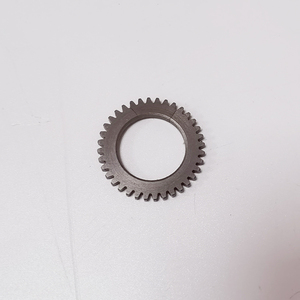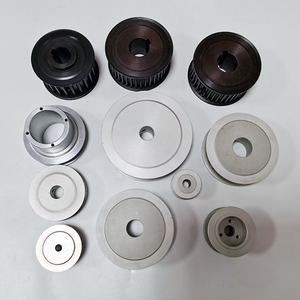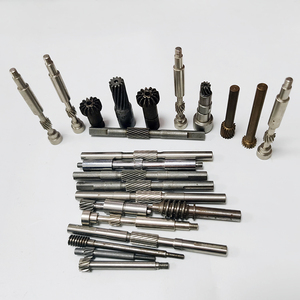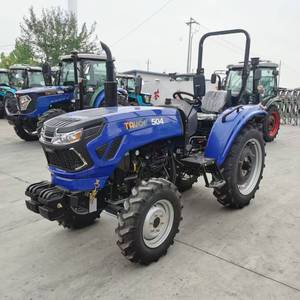(267907 products available)








































































































































































































The term gear refers to the equipment used to carry out an activity. The gear can be classified according to the activity for which it is intended, such as hiking, climbing, skiing, or snowboarding. Here are some types of gear for different activities.
Hiking Gear
These include everything necessary for a day hike or a multi-day backpacking trip. Footwear is the most important, including hiking boots and socks. Clothing includes moisture-wicking base layers, insulating mid layers, and waterproof outer shells. Packs carry everything, from hydration systems to cooking gear. Navigation tools like maps and compasses help find the way. First aid kits and emergency supplies ensure safety. Cooking and food storage gear are vital for meals, while camping equipment like tents and sleeping bags support overnight stays. Lighting, tools, and repair kits are essential for various tasks, and personal items round out the list.
Climbing Gear
Essential for safety and success on the rock or ice. Harnesses and ropes form the backbone of safety systems. Carabiners and quickdraws facilitate rope management. Protection devices like cams and nuts secure the rope to the rock. Belay devices and helmets protect from falls and falling objects. Shoes provide grip and support, while chalk aids in handling sweat. Ice climbing requires axes and crampons, while mountaineering adds gear like snow anchors and avalanche tools. Training and experience are crucial, but gear enables climbers to tackle challenges safely.
Skiing Gear
This refers to the equipment necessary to enjoy the winter sport of skiing. At its most basic, skiing gear consists of skis, ski boots, poles, and bindings. However, skiing gear also includes protective gear such as a helmet, goggles, and gloves, as well as clothing like base layers, mid layers, and waterproof outer layers. For backcountry skiing, additional gear like skins, avalanche safety equipment, and a backpack are necessary. Skiing gear varies by discipline, whether alpine, cross-country, or freestyle, each requiring specific equipment to meet the demands of the terrain and techniques.
Snowboarding Gear
Includes boards, boots, and bindings as the core components. Boards vary in shape and size to suit different terrains and riding styles. Boots must fit snugly, providing support and flexibility. Bindings connect the board and boots, allowing for adjustments to optimize comfort and control. Riders wear helmets and goggles for safety and visibility, and layered clothing protects against cold while permitting movement. Accessories like gloves, wrist guards, and knee pads enhance safety and comfort. Gear choices depend on skill level and the specific conditions of the slopes.
Gear 2 is a smart device that assists users in tracking their fitness progress and managing notifications. The design is sleek and modern, with a focus on functionality and style. Here are some of its key design features:
Display
The Gear 2 has a vibrant AMOLED display that is bright and clear. The screen is 1.63 inches diagonally and has a resolution of 320 x 320 pixels. The display is touch-sensitive and responds well to gestures. It is also outdoor-readable, which makes it suitable for use in bright sunlight. The Always-On feature allows users to view the time and notifications without having to wake the screen.
Body Design
The body of Gear 2 is made of aluminum. It is lightweight and comfortable to wear. The design is slim and does not bulge on the wrist. It is available in different colors, including charcoal black, mocha gray, and wild orange. The back of the watch has sensors for heart rate monitoring and fitness tracking. These sensors are accurate and provide real-time data.
Strap Options
The Gear 2 has customizable strap options to suit different preferences and occasions. Users can choose from a variety of materials such as silicone, leather, and metal. Each material offers a distinct look and feel, from sporty to luxurious. The straps are easily interchangeable, allowing users to switch them based on their outfit or activity. Whether for fitness tracking or as a fashion accessory, the Gear 2 provides versatile strap options that enhance its smart functionality with personalized style.
Buttons and Ports
The Gear 2 has a single home button on the side that is used for navigation. The button is responsive and provides haptic feedback. There are also speakers and a microphone for voice commands and phone calls. The charging port is located at the back and uses a proprietary cable. It supports wireless charging, which is convenient for users.
Water and Dust Resistance
The Gear 2 is rated IP67 for water and dust resistance. This means it can withstand immersion in water up to 1 meter for 30 minutes. The Gear 2's water resistance ensures that users can wear it while washing their hands or during light rain without worrying about damage. The dust resistance also protects the watch from particles in dry environments. This robust design makes the Gear 2 suitable for outdoor and sports activities.
Ergonomics
The Gear 2 is designed with ergonomics in mind. It fits well on the wrist and does not cause discomfort. The weight is evenly distributed, making it suitable for prolonged use. The design team conducted extensive testing to optimize the shape and size for different wrist types. They also considered the placement of buttons and sensors for easy access and operation. The result is a smartwatch that is user-friendly and comfortable for daily wear.
Gear can be worn in a number of different ways, depending on what the occasion is, and the type of style one is trying to achieve. For a casual look, a pair of sneakers can be paired with jeans or shorts and a t-shirt or hoodie. This combination is perfect for everyday wear or for going out with friends. If one wants to dress up a little, they can opt for a nice pair of sneakers, which can be paired with chinos or jeans and a button-down shirt or a sweater. This combination is ideal for a casual date or a night out.
For outerwear, matching gear jackets with the right clothes can keep one looking stylish and feeling comfortable. A bomber jacket can be paired with jeans and a t-shirt for a classic look, while a parka can be worn over a sweater and jeans for a warm and stylish outfit during winter. A windbreaker is perfect for layering, so it can be worn over a hoodie or a long-sleeve shirt with jeans or athletic pants for a sporty look.
When it comes to accessories, there are plenty of ways to incorporate gear into an outfit. A backpack or a messenger bag can be paired with any casual outfit, while a leather bag can be worn with more dressed-up clothes. A cap or beanie can add a casual touch to any outfit, while gloves and scarves are essential for staying warm during the colder months.
For a more athletic look, gear can be matched with performance apparel. Moisture-wicking shirts can be paired with compression tights or shorts for a comfortable and functional workout outfit. Running shoes can be paired with athletic socks and gear apparel, such as a running jacket or a hoodie, for a complete look.
Q1: What are the essential gears for hiking?
A1: The essential hiking gear includes sturdy hiking boots or shoes for traction and support, moisture-wicking clothing to regulate body temperature and stay dry, a well-fitted backpack to carry essentials, navigation tools like maps and compasses, and safety equipment such as first aid kits, headlamps or flashlights, and multitools or knives. Hydration systems are also crucial for staying hydrated on the trail.
Q2: What are the essential gears for camping?
A2: Essential camping gear includes a high-quality tent for shelter, a sleeping bag rated for the season's temperatures, and a sleeping pad or inflatable mattress for comfort. Cooking equipment like portable stoves or campfires, cookware, and utensils are vital for meal preparation. Lighting solutions such as lanterns or headlamps, clothing suitable for varying weather conditions, and tools for setting up camp, like tents and survival gear, complete the list.
Q3: What are the four types of outdoor gear?
A3: The four types of outdoor gear include clothing and footwear designed for specific activities and weather conditions, shelter and sleeping gear like tents, sleeping bags, and hammocks for protection and rest, cooking and food storage equipment for meal preparation and nutrition management, and tools and safety equipment, including multitools, first aid kits, navigation tools, and fire-starting gear for practical assistance and security.
Q4: What materials are outdoor gear made from?
A4: Outdoor gear is constructed from various materials chosen for their specific properties. Nylon and polyester are common for backpacks and tents because of their durability and water resistance. GORE-TEX and other waterproof-breathable membranes are used in jackets and pants to provide wind and water protection while allowing moisture to escape. For sleeping bags, synthetic fibers like PrimaLoft and natural down fill offer insulation, with each material providing distinct benefits regarding heat retention and compressibility. Additionally, stainless steel, aluminum, and titanium are favored for cookware and tools due to their longevity and lightweight characteristics.